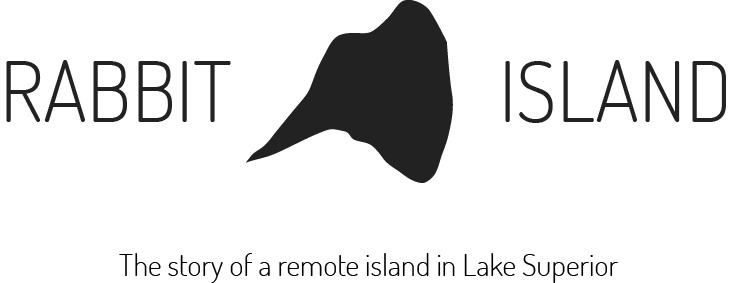June 17th, 2013. 10:25am
With the summer upon us, I thought I’d send you a brief update. About 10 days ago I stopped out at your island along with Nathan from the Keweenaw Land Trust. The Lake could not have been calmer, making for a smooth ride. We traversed the island, stopping at the heron rookery, which unfortunately showed no signs of nesting. Algal growth along the shore line is also more pronounced. We did find two little brown bats.
I wanted to confirm that it is still O.K. to pursue two of the projects we discussed last fall. First would be population genetics of the southern red-backed vole (Myodes gapperi). This would include Rabbit Island, the Keweenaw mainland, and possibly Manitou Island. We’ll send you a copy of the proposal. I’m currently at the meeting for the American Society of Mammalogists in Philadelphia and talking with colleagues about this. We would probably use microsatellites or single nucleotide polymorphisms (SNP array or “Snips”).
The second project would be establishing one, or preferably two, live trapping grids on the island. These grids would be trapped for one week, once a year in late summer or early fall and compared to a similar trap effort on the mainland. This would be a long-term effort, hopefully carried out for many years. I would propose placing one grid on the ridge in the area dominated by maples and one grid on the east-central part of the island—off the ridge—in an area with a notable balsam fir component.
Thanks for your input. Hopefully our paths will cross this summer.
Cheers,
John
10:34am
John,
All sounds excellent. Thanks for the update. There will be several illustrators, painters and photographers on the island this summer. Possible collaboration?
I have been worried the rookery has been on decline for a while now. The number of nests appears to be decreasing. Neighbors in Rabbit Bay and say they haven’t seen much “flyover" activity in the last several years. I speculate it might have something to do with the return of the eagles, though I can’t be certain.
The algae is also interesting. We’ve definitely been noticing an uptick every year except the first. I assumed it was due to water temperatures, which were at record highs for the past two summers, but again, there is uncertainty here. Any insight?
Best,
Rob
10:41am
Lucy, here are a few details from John’s recent visit to this island. He’ll be studying small mammal genetics this summer.
Please pass this on to Eva as an FYI. Possible collaboration?
- Rob
11:52am
Rob,
Thanks for the support and very prompt reply. Most of our scientific graphs are data generated and are generally clean and to the point, using software available in our labs. That said, I’m not very good at bridging the gap between the sciences and the arts. I’ve cc’d one of my colleagues, Deborah James, in communications, with experience in this area. She recently procured a small grant to initiate a media-based effort. We’ll send you a copy of the proposal. Because I’m in Philadelphia and Debbi is in London, it may be a week or so before sending you a copy.
As for the increase in shoreline algae, my direct response is that I don’t know. Although global warming is a possible contributor, it is an easy fall-back explanation. I have not seen extensive development of filamentous algae in rocky areas along the mainland; this probably warrants more careful observation. I’ve cc’d another colleague, Tim Gsell, who is a microbiologist. Field samples and plating for E. coli or other fecal coliform bacteria might be a starting point, but I would bow to Tim’s decision on the best initial approach.
John
June 20th, 2013. 12:30pm
Rob,
This is Tim, the microbiologist John mentioned in the last message. I like the idea looking at the various microbial populations from these sites to get a baseline, with future test dates allowing for identifying changes in these microbes numbers and diversity. It would be relatively easy to do some water monitoring for total bacteria, E. coli and fungi, etc., via the petrifilm platform. We potentially can complete some chemical analysis as well.
Tim
June 27th, 2013, 915pm
Hi Rob and John,
As discussed below, I am sending along the approved grant proposal for my cross discipline undergraduate research course. While it is visual media focused (and, I truly hope an outcome is to engage more people outdoors), my long-term interest in this project is to produce both media art and research (manuscript for publication) outcomes. Working between the social sciences and media arts, I produce both of these outcomes in my research work. I am open and enthusiastic to explore cross discipline collaborations. This includes working with video + quantitative/qualitative data. Exploring ways to visualize this data that may provide an opportunity for crossing the arts and sciences.
In terms of the project I am working towards, it would be ideal to visualize scientific research using live video feed along with the visualization of additional relevant data to map rich and live data to an existing area of study. In the future, we might consider using Wii gaming technology to trace the gestures of animals/movement in the wild (more on this later). With a graphic design and multimedia background, I believe this is an opportunity. To give you an idea of how I am thinking, here is a link to project by Richard Saul Wurman: The Urbanization of Planet Earth.
Regards,
Debbie
